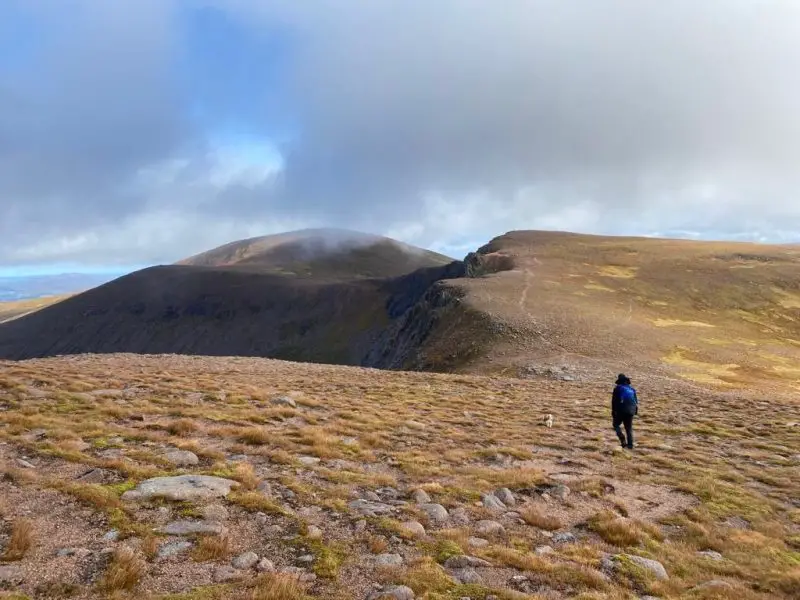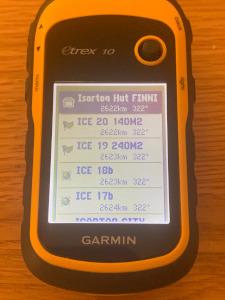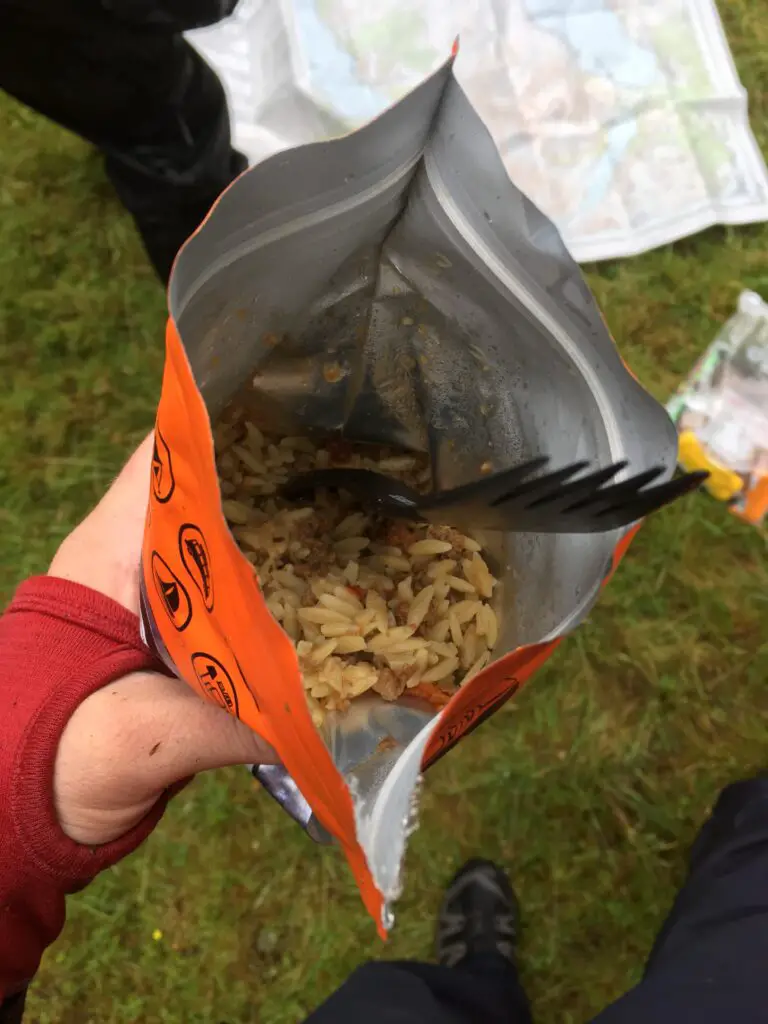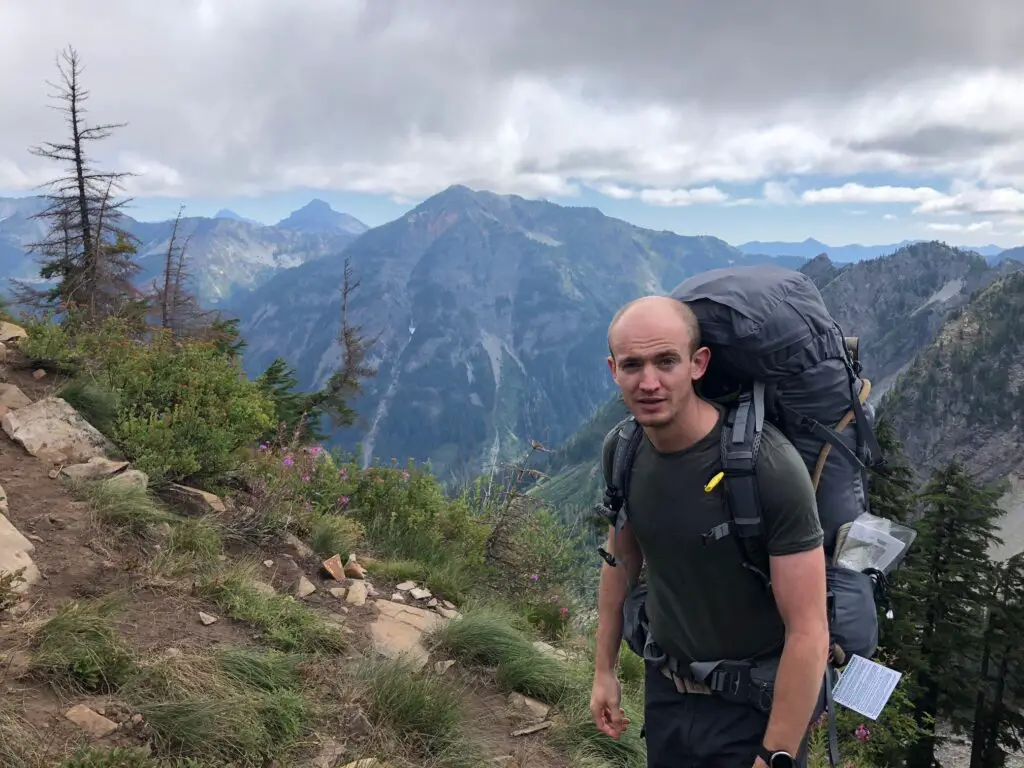Hiking vs Trekking: what’s the difference between a hike and a trek
Ever wondered if there’s a difference between hiking and trekking? There is. Let’s explore those differences.
Hiking vs trekking; is there really a difference? Well, the answer isn’t always as clear-cut as you would imagine. Some will say a trek is nothing more than a long hike, but this really isn’t true. In the same way, a short, 5 mile hike comes nowhere close to a long-distance thru-hike, the same can be said of comparing a hike to a trek. The first task we have is to define these two activities…
Hiking definition
Hiking is an outdoor activity where the participants move from point to point, often navigating the route and carrying all necessary equipment in a rucksack. Hiking distances range from a minimum of around 3 miles and run up to 20+ miles per day. Self-sufficiency is not a requirement as some hikers will pause in built-up areas to replenish supplies and, sometimes, stop for a warm drink in a local cafe.
Trekking definition
Trekking is a more arduous activity run over multiple days and, for the purist, requires a self-sufficient approach to the journey. Treks often span multiple weeks during which you have little, if any, contact with civilisation.
Summary: It’s all in the distance and timing
The key difference between hiking and trekking are distance, time outdoors, and self-sufficiency. If you carry all your gear and food, with no stop-offs to replenish, and you’re covering many miles over multiple without visiting habitation, you’re on a trek. Now, it could be argued that thru-hiking is a form of trekking – we’ll cover that question in a while.
For the sake of argument, the difference between trekking and hiking lies in the degree of difficulty. If you need to carry every necessary item on a very long distance ‘walk’, you’re a on a trek.
What about walking?
In the UK, hiking is often referred to as hillwalking, walking… or rambling. With that in mind, hillwalking can consist of short, or multi-day longer, distance routes across difficult terrain. An example of medium-distance hillwalking routes includes Jake’s Cairngorm and Northern Corries hike and hiking Ben Vorlich post.

The term walking tends to revolve around activities of a short distance, often after Sunday lunch! Most ‘walks’ don’t require specialist equipment, route planning, or the carrying of food (after all, your stomach is full of Sunday lunch). Read this post for a more detailed explanation of the difference between hiking vs walking.
Hill walks can be just as tough as a hard hike
Because, in essence, they are the same activity albeit by different names. For anyone not from the UK, don’t assume a ‘hill walk’ is an amble over gently rolling hills – in the Army, instructors on Special Forces selection use this word to describe the fast-paced marches during which candidates with 70+ lbs of gear on their backs cross 40 miles of mountainous terrain in as little as 10 hours. And that’s after 4 weeks of the same, plus early morning PT sessions.
Summary: walking is not trekking, but could be a hike!
I know, it’s confusing. For the purposes of this post, let’s agree walking is a more sedate option with very little requirement for planning. Also, let’s agree on this hillwalking = hiking. Finally, trekking and walking are only similar due to the fact you’re on your feet in the great outdoors.
Is backpacking a form of hike, or trek?
Backpacking is a form of both hiking and trekking. The term backpacking became popular in the 1950s and is often used by travelers on journeys around a country or the globe.
Equipment: the right gear for your treks and hikes
This is where the real differences between trekking and hiking become more apparent. Unless you’re planning to stop at hostels, hotels, or huts (both, in Scotland), you’ll be camping out under the stars. Long treks may take you through different seasons and your shelter needs to withstand the worst of weather. Treks in colder climates demand specialist, and often expensive, gear.
Likewise, the gear you take on a trek can often vary from hiking clothes, especially if you’re traveling in harsh and difficult conditions. Let’s take a look at a few considerations:
Pants, shorts, shirts, boots… what clothing is right for your travels?
The clothes you wear, and pack in your rucksack, will need to be adjusted depending on the environment, and duration, of your activity. No matter where you travel, you’ll need to ensure the clothing you carry provides adequate protection from the elements.
- If you’re expecting rain, take a good quality shell layer;
- Striking out into a hot environment? Think ‘lightweight and well-ventilated’.
- Footwear must meet the demands of the terrain. In the same way, you choose layers to match the environment, you also need to pick boots/shoes that can withstand the elements whilst keeping your feet ventilated and dry. Check out our hiking boot guide for more information.
Tech (GPSs, beacons, and the rest)

Often overlooked on short duration trips, the electronics you carry must provide all the functionality you need. The most important, and obvious feature is an SOS function. Many more modern devices have this capability built-in (including the new iPhone 14) which makes life much easier when it comes to making a choice.
Although Jake and I are big on map reading, and the art of navigating using a compass, we recognise the usefulness of a GPS. But we never 100% rely on this type of aid.
Some recommendations (which we’ve reviewed), include:
- Garmin eTrex 10. A basic GPS unit that’s easy to use and has pretty much every feature you will ever need for navigation.
- Garmin InReach and its little sibling, the Mini. These units come with all the features of the eTrex 10 with the added advantage of being able to send SMS via the Iridium satellite network (requires a subscription)
- Iridium GO! Whilst not a device that can be used as a standalone navigation aid, the GO! does show Lats and Longs and, when combined with one of Garmin’s many apps, it can be used to map your location.
Summary: hiking vs trekking equipment clothing doesn’t vary much, if at all.
In all honesty, on all the treks and hikes I’ve completed, there has been little need to buy additional gear. Only in some of the more severe climates where the weather is hostile and can turn in a matter of minutes have I bought and packed specialist equipment. And on some occasions, I’ve even worn shorts and shorts, but these have been designed with the outdoor enthusiast in mind (no, that moth-eaten AC/DC t-shirt simply won’t cut it when sweat pours out of your body, or cold winds blow in.
At a minimum, the following gear is needed for both hiking and trekking:
- Base layer
- Mid layer
- Shell layer
- Good quality footwear (everyday shoes and trainers designed for walking about town are an invitation for ankle injuries)
- A decent ruck capable of holding all the gear not in use.
- A navigation aid you can use to track your precise location.
How many hikes should you complete before organising a trek?
Is there really a need to complete multiple hikes before organising a long-distance, multi-day trip into the wilds? No, not at all. But that doesn’t mean you should simply step out on a hike without some prior experience.
In the early days, before moving into treks, a great deal of my time was spent roaming the hills and wild of Devon, in the South West of England. One of my more recent mini-adventures was a north to south Dartmoor hike and it’s one I wouldn’t have completed without at least a decent knowledge of navigation, weather patterns, and nutrition.
You see, every piece of experience you build goes towards making your travels less stressful and less likely to end in failure. Even the simple fact of knowing how your body responds to long periods of activity is beneficial when it comes to planning a big route.
So how many hikes should you complete?
Although hard to put an exact figure to this question, I’d say at least 20. If after hitting this number you’re still feeling unsure of a particular skill go back, hike more and practise. The more fluid and second nature you can make the various skills required, the easier your planned trek, or hike, will be.
Summary: Stepping up from hiking to trekking is a numbers game
Put simply, investing in skills over a number of hours will make your journeys fun and safe. The 3 key areas you need to consider during planning are:
- Navigation skills
- Understanding of nutrition
- Knowledge of weather patterns and how they affect your choice of protective gear.
What about trekking in extreme environments?
I touched on this in the equipment section and feel this topic needs extra discussion. Extreme environments are so-called because they represent a risk to your life. I’ve spent months in the Sahara Desert and many more in polar regions where temperatures have dipped to -66C, which means I have very good knowledge of how my body performs and how to reduce the risk of cold and heat injuries.
Whilst I won’t go into the specifics here, Jake and I have written a couple of posts outlining the precautions you need to take when you’re in extremely cold, or hot, environments. Although we highly recommend you read the posts, here’s a quick summary below:
Traveling in extreme heat
Plan for the following:
- Water replenishment. You’re going to sweat, a lot, and you’ll need to either carry a sufficient quantity of water for your entire journey (not likely if you’re on a long haul) or plot out regular stops where you can refill water bottles/canteens.
- Clothing. Lightweight clothing that both protects from ultraviolet rays and wicks away sweat fast is key to your comfort.
- Food. Perishable foods will rot fast in the heat so ensure you either resupply at key points, or carry only foods that don’t go off (freeze-dried food works best here).
- Movement. The heat of the midday Saharan sun is brutal! Where possible, move during the cooler periods – the mornings and evenings being the obvious items – and rest at the height of the day’s heat.
- Protect exposed skin at all costs. On a scale of 1 – 10, severe sunburn is an 11!
Traveling in extreme cold:
- Layers, layers, layers. Wearing multiple layers of thin material covered by a durable shell will keep you warm. Additionally, if your body gets too warm you can peel off a layer, or two, to allow heat and sweat to vent.
- Hydration. Although water tends to be plentiful in extreme cold environments, you need to boil ice and snow – a task that takes time. Also, we can fool ourselves as to how much water we need moving in the cold (it’s more than most people think) and you’ll need to maintain a regular intake of at least 200ml for every hour of activity.
- Some foods will freeze in the extreme cold (trust me, trying to bite off a chunk of cheese that’s been said in -25C for a few hours is not fun. You could slip a chunk into your inner jacket pocket to defrost, but you’re going to smell ‘ripe’ after a few days.
- Sources of water for cooking and drinking are easier to find than in hot, arid environments, but you’ll need to carry ample supplies of fuel to melt the snow and ice.

Summary: hot or cold, you need to prepare for the environment
Perishable foods are fine for a short, or day hike, but if you’re going to be in the wilds for longer, in hot and cold weather, freeze-dried is a better option. But that doesn’t mean you should opt for meals with the highest calories – know your body’s requirements and plan around them. And always carry a little more food than you need… just in case.
Special mention for all you other long-distance hikers: backpacking, where does it fit in?
For the most part, backpacking lives in a niche of its own. Yes, it’s true some backpackers may cover may hundreds, or thousands, of miles with some of the more adventurous backpacking trips covering the surface of the globe, but this activity usually involves the use of hostels and hotels as stop-off points. This is in contrast to your average hiker, or trekker, who spends most of their time under canvas in the great outdoors.
I’m not saying backpacking is any less arduous – you’ll spend many hours on your feet as you move from one location to the next – but spending resting hours in a hotel doesn’t compare to life in a tent. Additionally, I’d like to say I have many friends who’ve spent weeks, months, and, in one case, years on their travels with many adventures under their belt.
Hiking and trekking tips
Looking back over this post you can see there are big differences between these two outdoor activities. And now we’re going to cover off a few tips for each:
Hiking tips
Note: Jake and I have put together a list of ultra lightweight hiking tips for those of you who like to move light and fast. For the rest, here are a few ideas to help you along the trails.
- Pack your rucksack with only the required gear for your hike. Additional items that are unlikely to see the light of day are just dead weight and should be replaced with extra food and water.
- Route planning, whilst important, can be flexible especially if you’re traveling a short distance in a local, or well-known, area. Consider using areas of habitation as handrails, or reference points, on your route plan.
- Even on a short hike, you must carry a means of contacting emergency services. A broken ankle whilst racing through local woodland on a winter’s day can just as lethal as the same injury in the mountains.
- Always carry more food than you need. Dead weight is bad, ample food is good; you never know when you might get caught out longer than you’d planned, and going hungry when you still have a distance to cover is an unpleasant experience, and can be dangerous.
- No sandals, or training shoes. This is my pet peeve; seeing hikers scrambling up mountainous trails wearing a pair of Nike running shoes. Yes, they are comfortable but you’ll soon discover how inappropriate they are when you slip and twist your ankle.
Trekking tips
When you are really into the depths of the wilderness every aspect of the journey needs to have a contingency.
- Navigation skills are vital when you’re a long way from civilisation. We recommend developing this skill until it’s second nature as you’re likely to be far from easy contact with people, and rescue services. A good starting point would be a basic map reading and navigation course which will provide a useful foundation upon which to build more advanced skills.
- The amount of gear needed for a trek is far in excess of what you need for a hike and weight will be a major consideration when planning. Where possible choose lightweight equipment such as pots and pans and don’t be tempted to load up on the extra gear you simply don’t need.
- Consider how much power you’ll need to keep essential gear working. Stacking 10 Power Monkeys in your ruck is adding unnecessary load on your back, and definitely won’t give you enough power to keep your smartphone working for 30+ days. We recommend taking solar charging devices with you – there are plenty of lightweight, high-output devices on the market and they’re not painfully expensive.
- Know the limits of your body. Hiking 20 miles in one day, with a hot meal waiting and transport home at the end of your journey, is within the abilities of most people. Trekking 20 miles to your first campsite, erecting a tent, cooking food, then preparing for the next 20 miles is an art in itself. Adapting to the demands on your body may include traveling shorter distances each day to give you adequate time to rest, eat and recuperate.
- Following on from tip 4, get fit! Your body, and mind, will thank you. It is possible to hike whilst unfit. In fact, using hiking as the basis for fitness is a great idea as it’s low impact and ‘training’ sessions can be long, or short. But treks demand a higher level of fitness to cope with the demands on your body. Jake and I have a useful starting guide on how to get hiking fit in the gym.
- Emergency comms will be of the highest importance when you’re in the middle of nowhere! And don’t be tempted to rely on your smart phone as many remote regions have poor, to zero, cell coverage. We recommend devices such as the McMurdo FastFind PLB, and Garmin InReach (or Mini). If you need SMS-type services and email, consider an Iridium GO!
Notable treks you’ve probably heard of
We’ve attempted to go as in-depth as possible without confusing people and a good way to understand the differences between hiking vs trekking is to look at some examples of routes that can be classed as treks. Here are few epics:
- Mount Everest base camp. A tough 12 day journey that climbs through 4000m of elevation to hit the starting point of the route to the ‘top of the world’. This is one of those routes where knowing your physical limits, being fit, and able to carry a heavy load up what is a really big hill is key! Obviously, this isn’t an impossible trek to complete, but people have died through, amongst other reasons, a lack of preparation.
- The Pennine way. Staring in Scotland, the route heads pretty much south until reaching the Peak District in England, this classic trekking route covers 268 miles and takes in stunning views across both borders. It’s also the oldest of the British National Trails and, although formally established in 1969, some sections date back to the Bronze Age.
- Pacific Coast Trail (PCT). We couldn’t list some of the world’s greatest trekking routes without mentioning this great North American trail. Over 2663 miles long and broken into sections, it’s the equivalent of 10 Pennine Ways stacked on top of each other and takes an average of 5 months to complete. Conceived in `932, the PCT was given official status in 1968, under the National Trails System Act. Take a look at Jake’s write-up of his travels on section J of the PCT, plus his section J kit list.

Hike or trek: which should you choose?
Time to wrap up. Although we decided to put this post together as a discussion point around hiking vs trekking, there’s little to argue other than the semantics. Regardless of how you spend your time outdoors, the key is your enjoyment. Some people enjoy big, long distances routes taking many days to cover the miles, whilst others are happy with a 10 mile hike, a warm sleeping bag, and a night under the stars. No matter which option you choose, have fun.





One Comment